Top museums worldwide for Ancient Egyptian artefacts
Top museums worldwide for Ancient Egyptian artefacts
Top museums worldwide for Ancient Egyptian artefacts
-
Hannah
-
Hannah
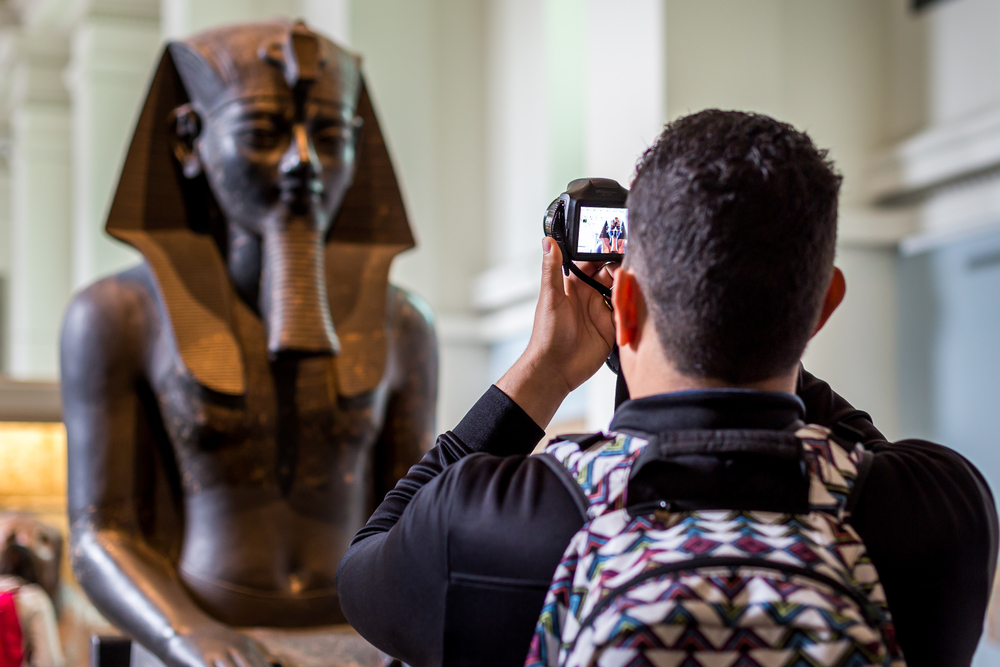
National Museum of Egyptian Civilisation (NMEC), Cairo
Earlier this year, I wrote about the Pharaohs’ Golden Parade that took place in Cairo, in which 22 mummies which had been housed at the Museum of Egyptian Antiquities were moved to the newly opened (and enormous!) NMEC. Of these mummies, two are especially famous: Ramses II, a long-lived king who did many great works, and Queen Hatshepsut, one of the very few female pharaohs. These, and the other mummies, can be seen in the Royal Hall of Mummies, which ‘aims to give the visitor the feeling of strolling down the Valley of the Kings’.
Grand Egyptian Museum, Giza
https://grandegyptianmuseum.org
At the time of writing, this museum is still under construction, but I had to include it in this list because it truly is going to be the museum of Ancient Egyptian artefacts. Here for the first time you’ll be able to see the full Tutankhamun collection, comprising artefacts from all over Egypt, many of which have never been seen by the public before.
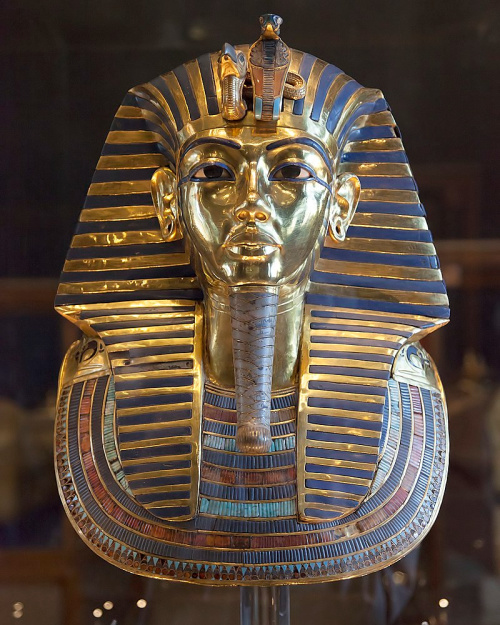
Tutankhamun’s death mask
British Museum, London
https://www.britishmuseum.org/
Upon his death, Sir Hans Sloane, a passionate collector of antiquities and curiosities, bequeathed 71,000 items to King George II. His eclectic collection became the basis of the British Museum, which was opened in the late 1700s. Already the collection included several artefacts from Egypt, but in the 1800s, as part of the Eyptomania whipped up by Napoleon’s Egyptian Campaign, some very important pieces were brought to the museum. To this day, two in particular draw visitors: the Younger Memnon, a huge granite head depicting Ramesses II (see my article ‘Ozymandias by Percy Bysshe Shelley’), and the Rosetta Stone, the key used to decipher hieroglyphs (see my article ‘Deciphering the Rosetta Stone: Jean-François Champollion’).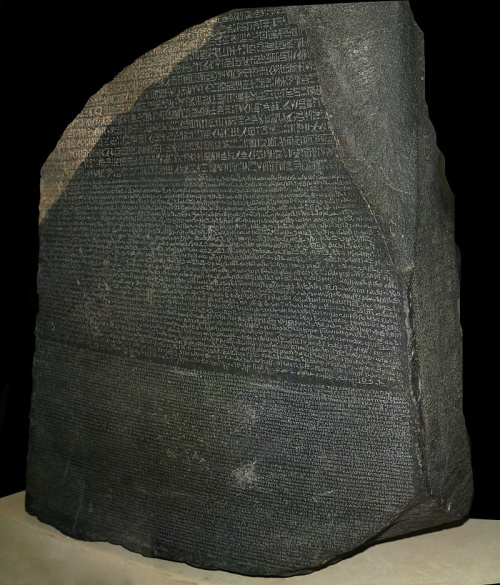
The Rosetta Stone
Egyptian Museum of Berlin
https://www.smb.museum/en/home/
This is part of the Neues Museum, recently rebuilt on Museum Island. Most of the artefacts date to the period of the pharaoh Akhenaten (c. 1340 BC), and the most famous by far is the painted bust of his wife, Queen Nefertiti (see my article ‘Akhenaten and Nefertiti’). It is one of the most iconic Ancient Egyptian artefacts in existence.
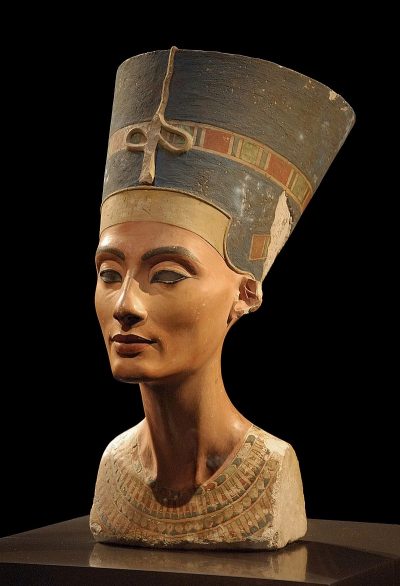
Nefertiti bust
The Met, New York
This museum, devoted to art, has more than 26,000 pieces of art from Ancient Egypt, more than half of which were discovered through the museum’s own archaeological digs in Egypt in the last century. In no fewer than 38 galleries devoted to Ancient Egypt you can see an amazing array of artefacts, including ‘William the Hippo’, a beautiful Middle Kingdom figurine that has become the informal mascot of the museum, and the Temple of Dendur, saved from ruin by floodwaters and transported, piece by piece, to the Met in the 1970s.

‘William’
Louvre, Paris
The Louvre is the most-visited museum in the world, for artworks like the Mona Lisa and the Venus de Milo, but also for its extensive Egyptian collection. Jean-Francois Champollion, who unlocked the mystery of hieroglyphs, was the curator of the Egyptian collection when the Department of Egyptian Antiquities was established in 1827. Highlights of the 50,000-item collection include the Great Sphinx of Tanis, found in the ruins of the Temple of Amun-Ra in Tanis, and the Seated Scribe sculpture, found at Saqqara and dating back 4,000 years.
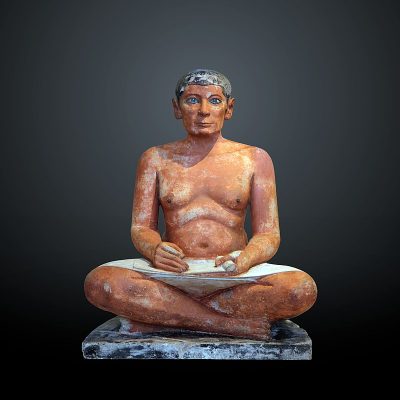
The Seated Scribe
Museo Egizio, Turin
https://www.museoegizio.it/en/
This museum in Piedmont, Italy specialises in Ancient Egypt and has the most important collection outside of Egypt. Here you can see the Temple of Ellesyia and the Tomb of Kha and Merit; but most exciting for many is the collection of papyri, which includes the Turin Royal Canon (the most complete list ever found of the kings of Ancient Egypt) and the Turin Papyrus Map (the oldest map of the ancient world).
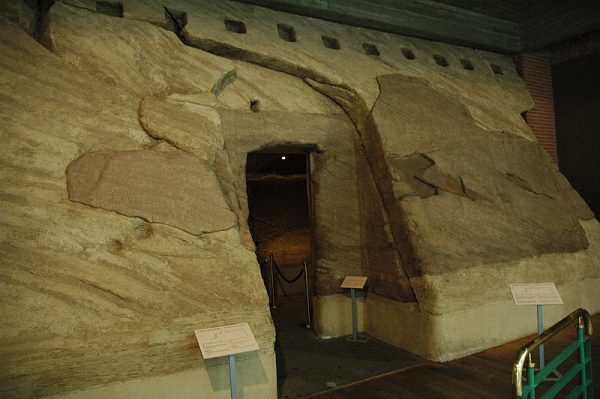
Temple of Ellesyia
At the Museo Egizio you’ll also find the Turin Erotic Papyrus, which I describe in my novel Song of the Nile:
‘People think that the Kama Sutra was the first sex manual of its kind, but there is a famous Ancient Egyptian papyrus painting discovered at Deir el-Medina in the early nineteenth century, created during the Ramses period, that pre-dates it.’ Phares grinned at her mischievously. ‘It portrays in the most erotic way what went on between the bedsheets in Ancient Egypt.’
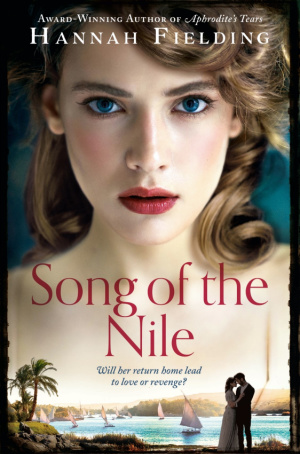
Song of the Nile: available to buy now
Photo credits: 1) Ram Kay/Shutterstock.com; 2) Roland Unger/Wikipedia; 3) Hans Hillewaert/Wikipedia; 4) Philip Pikart/Wikipedia; 5) Public domain/Wikipedia; 6) Rama/Wikipedia; 7) David Schmid/Wikipedia.